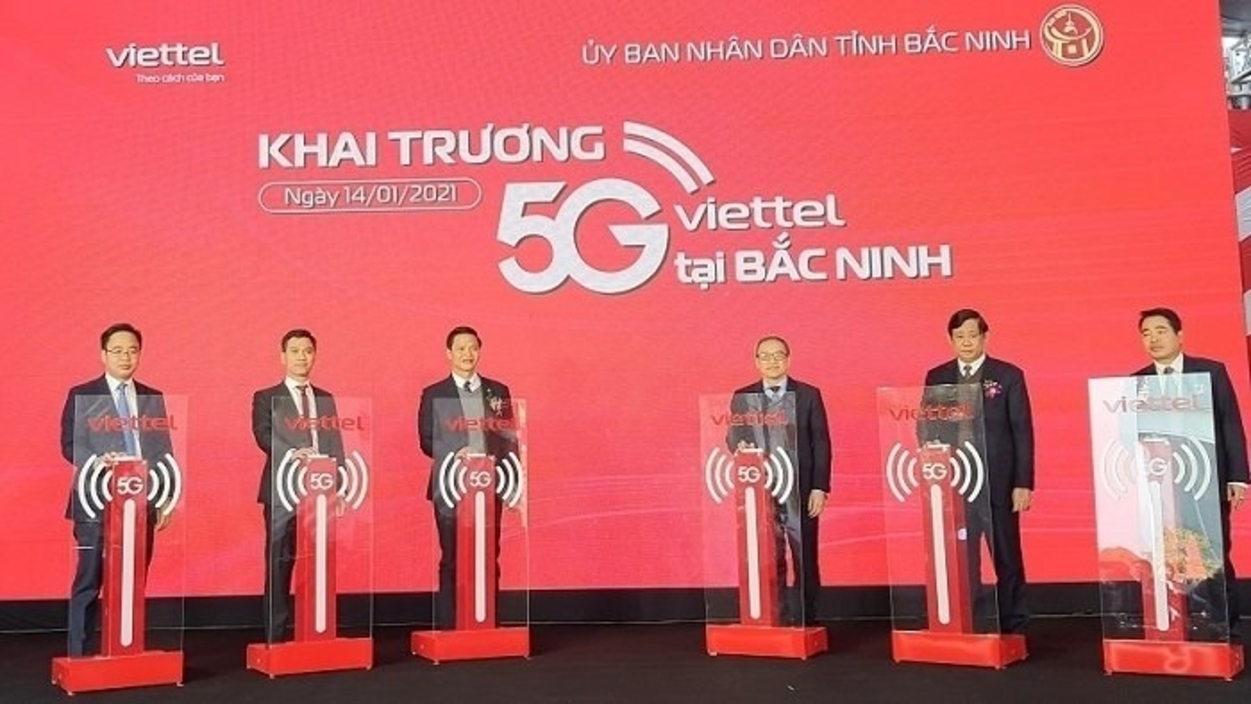
The Yen Phong Industrial Park in Bac Ninh province became the first in Vietnam to deploy a 5G telecom service, following a launch event held by the provincial People’s Committee and the military-run telecommunications group Viettel on 14 January.
Speaking at the event, the Deputy Minister of Information and Communications (MIC), Phan Tam, said the operation of a 5G service at the Yen Phong industrial park is a practical move to realise Politburo Resolution No. 52-NQ/TW on a number of policies on the nation’s proactive involvement in the Fourth Industrial Revolution.
According to a press release, this will also help Yen Phong attract “new-generation” foreign direct investment (FDI) as well as high-tech and green technology projects. He asked the Viettel Group to work closely with businesses operating at Yen Phong industrial park to fully deploy the 5G service, which can create a platform and space for them to put forward innovations in terms of building smart factories and diversifying their products and services.
He also requested Bac Ninh provincial authorities to create favourable conditions for the Viettel Group in building 5G technology infrastructure at the Yen Phong industrial park while coordinating with the group to promote digital transformation.
For his part, Standing Vice Chairman of the provincial People’s Committee Vuong Quoc Tuan affirmed that the launch of 5G at Yen Phong industrial park is an event of significance as it marks the robust integration and development of the telecommunications and information technology sector. He added that the application of 5G will help accelerate the production process and attract more investment to the park and Bac Ninh in general.
Within the final months of 2020, all three major mobile carriers in Vietnam announced trials of commercial 5G services, making Vietnam one of the first countries in the world to roll out the latest generation of wireless technology. This is expected to boost the digital economy.
As OpenGov Asia reported, unlike previous technologies most of which had to be imported, Vietnam has gradually mastered and is now capable of producing 5G equipment, a strategically important step in Vietnam’s development of information and communications technology.
State-run enterprise Viettel was the pioneer in announcing commercial 5G trials in late November with coverage in the Hoan Kiem, Ba Dinh, and Hai Ba Trung Districts of Hanoi. Owners of 5G-enabled devices can now use the service for free at a speed of up to 1.5 gigabits per second, far higher than 4G.
Later in mid-December, Vinaphone announced its 5G coverage in some central districts in Hanoi and Ho Chi Minh City as well as two demonstration centres, enabling residents without 5G devices to experience the new technological features. The third provider, Mobifone, also quickly caught up by piloting commercial 5G services in Ho Chi Minh City.
With exceptionally fast speeds, low latency, and high density (up to one million devices in one square kilometre), 5G is expected to revolutionise the fields of advanced technology, healthcare, transport, and education. It will lay the foundation for Vietnam to master and apply new technologies as well as succeed in its national digital transformation drive.
















